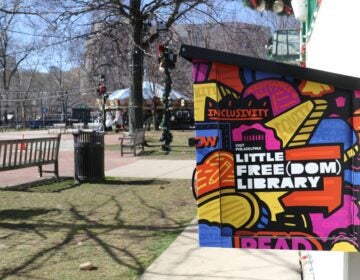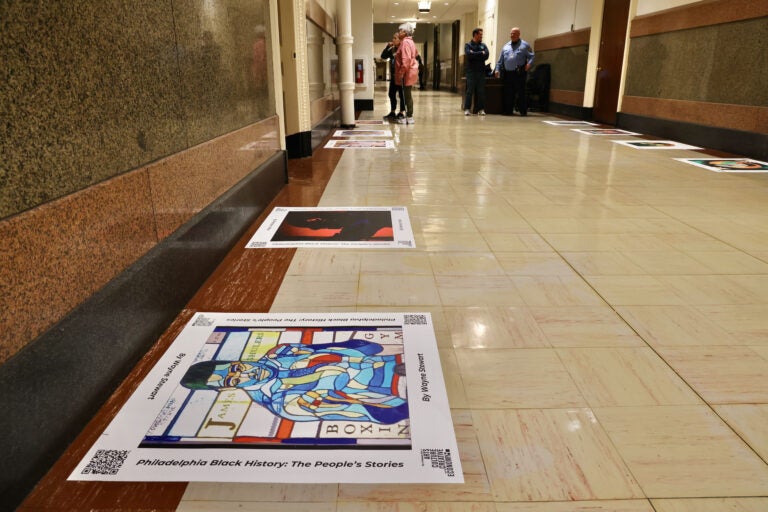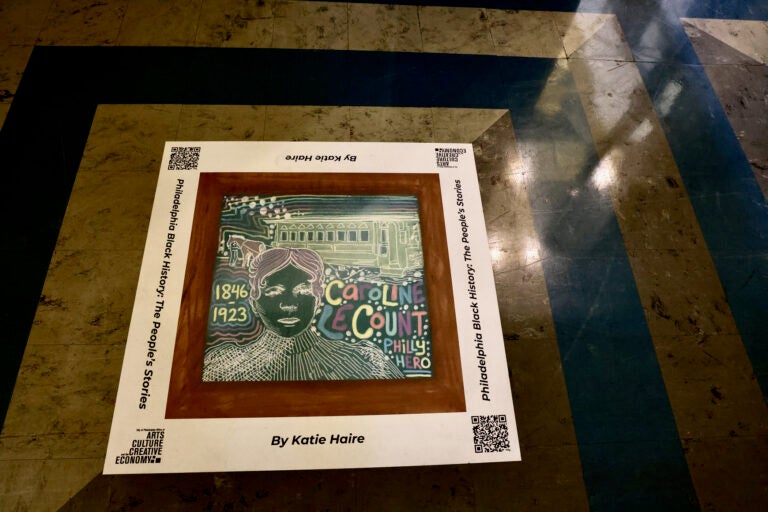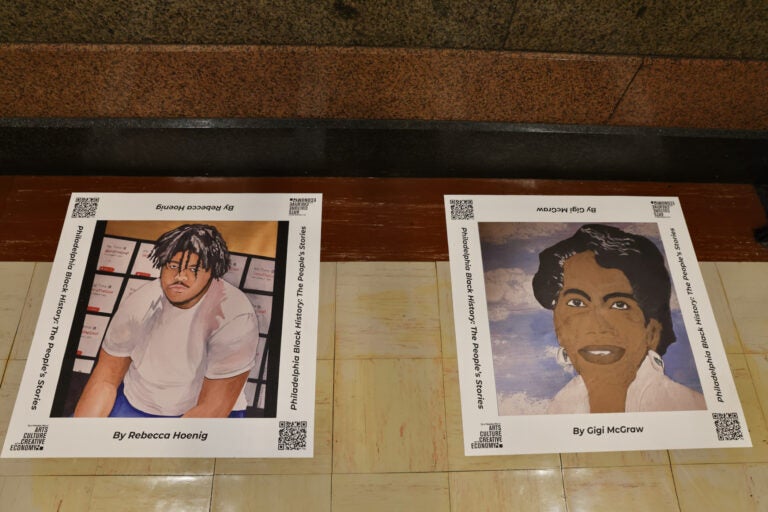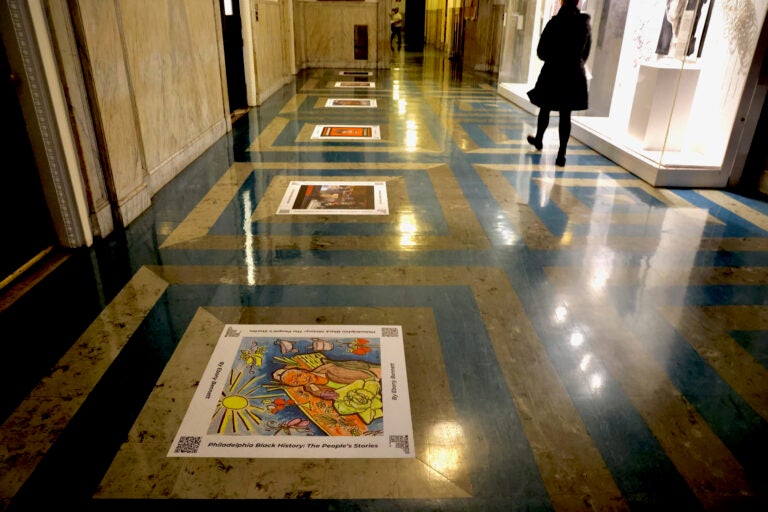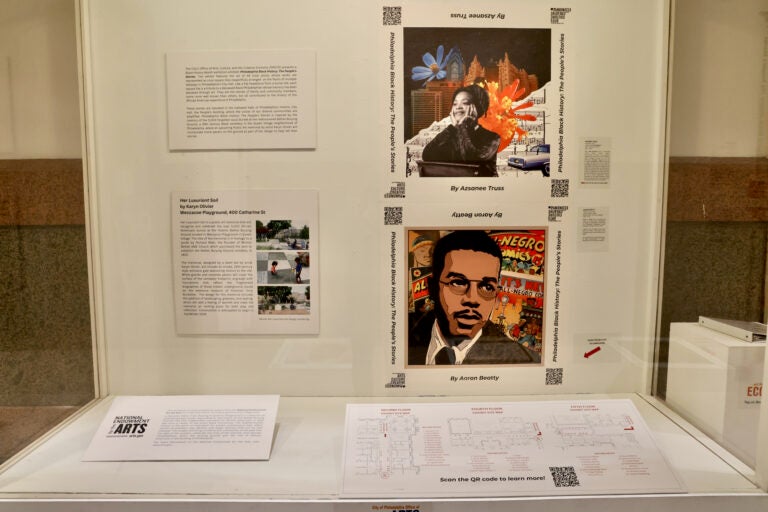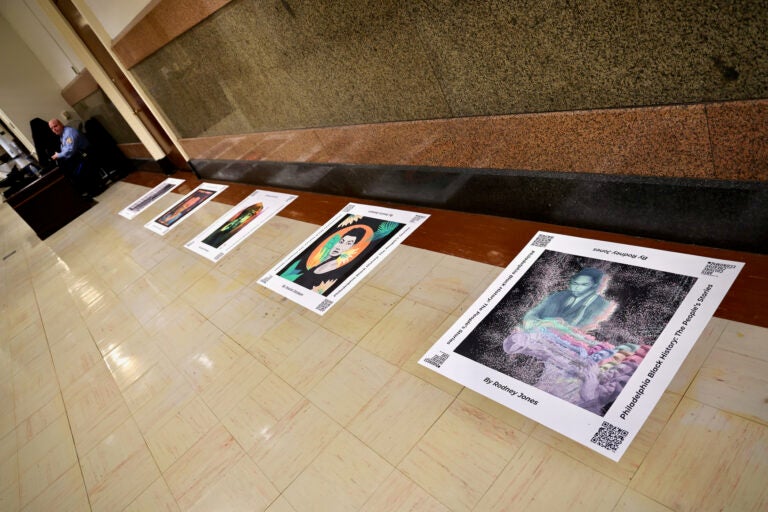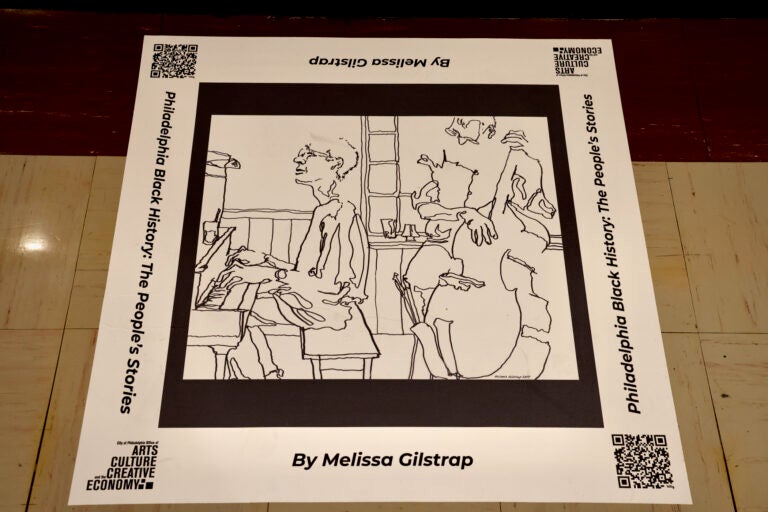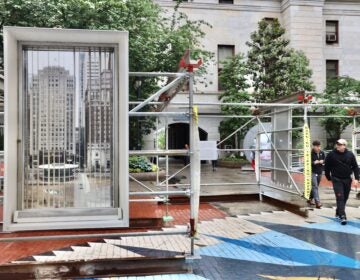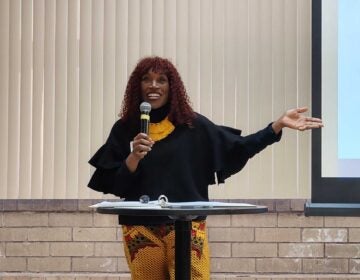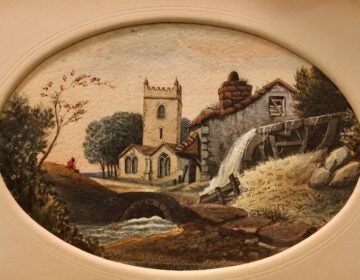The floors in City Hall are adorned with Black history
Forty-four acrylic floor tiles depict Black figures who made Philadelphia, from major civil rights activists to little-known community standouts.
Listen 1:25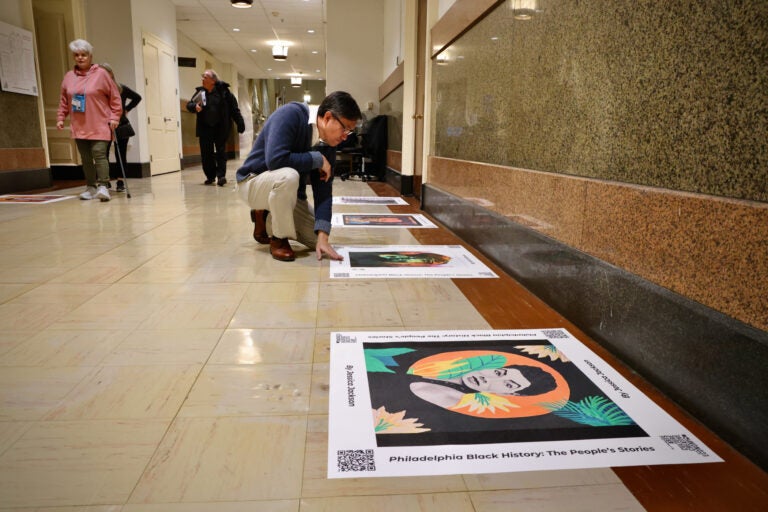
Tu Huynh, program manager for the Philadelphia Office of Arts, Culture, and the Creative Economy, kneels beside a portrait of Philadelphia artist and educator Moe Brooker, part of the exhibit, ''Philadelphia Black History: The People's Stories,'' on the second, fourth and fifth floors of City Hall. (Emma Lee/WHYY)
From Philly and the Pa. suburbs to South Jersey and Delaware, what would you like WHYY News to cover? Let us know!
On the fourth floor of Philadelphia’s City Hall, in the hallway directly outside City Council chambers, are portraits of mayors and council members from the 19th and early 20th century.
Some might be known to history buffs. Edwin S. Stuart was voted mayor in 1891 as the anti-corruption candidate who went on to become governor. Others are more obscure: James L. Miles was president of the Select Council (what is now City Council) at the turn of the century.
Notably, all the portraits are older, white men who are long dead.
But the floor of the corridors on either side of those portraits are now installed with acrylic tiles depicting Philadelphia’s departed Black residents.
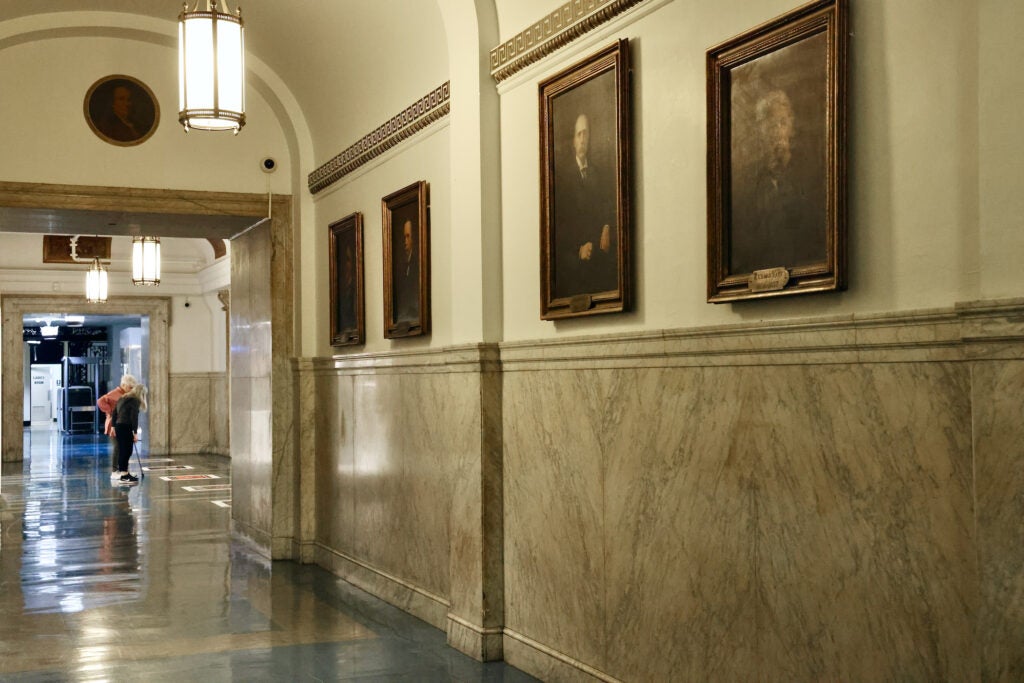
Some are well known, such as Paul Robeson, Marion Anderson and William Still.
Others are more obscure: Luby Ingram, one of the city’s first certified electricians; Dandridge Cunningham, a swim coach who trained high school champions and was the first Black water safety instructor in the Delaware Valley; and activist Caroline LeCount, colloquially known as Philly’s Rosa Parks for insisting on riding a segregated horse-drawn streetcar reserved for white people in 1867.
Because there are no known photographs of LeCount, her portrait is imagined by South Philly artist Katie Haire. Forty-four artists created images remembering the city’s Black residents on adhesive acrylic squares fixed to the second, fourth, and fifth floors of City Hall. “Philadelphia Black History: The People’s Stories” will be on view until April 12.
“Some of them are famous. Some are semi-famous, meaning they’re probably well known just to the communities they lived in,” said Tu Huynh, program manager for the Office of Arts, Culture and the Creative Economy. “Whether grandparents or community activists or gardeners or teachers or swim coaches, they all contribute to the fabric of the city.”
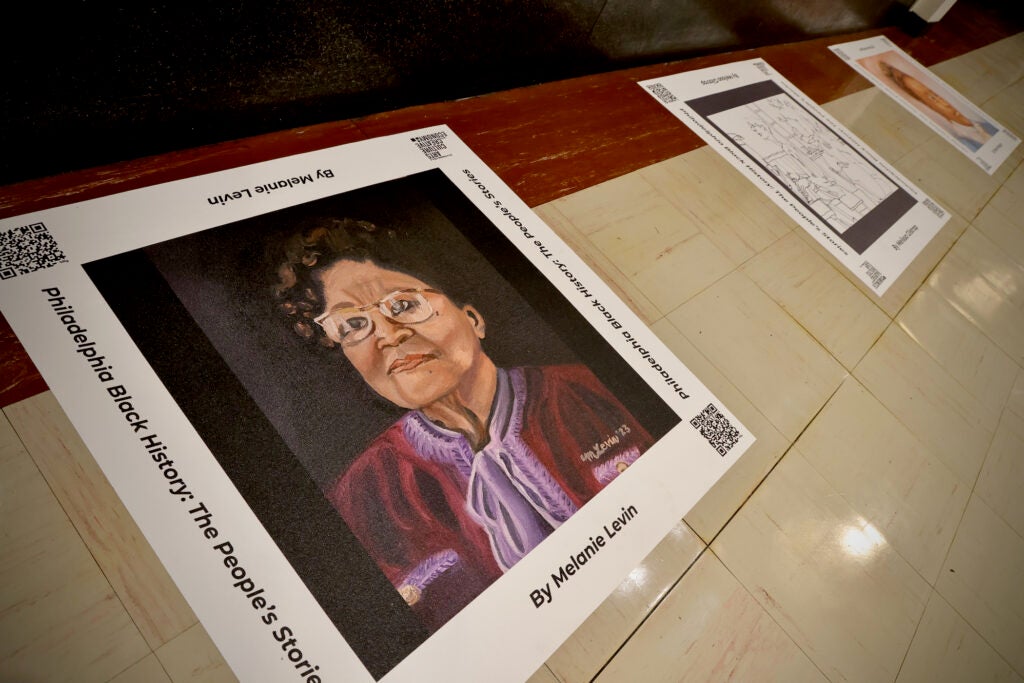
“Philadelphia Black History” was installed in City Hall to coincide with Black History Month, but it is also tied to a much larger project: Later this fall work is expected to begin on a public art project in South Philadelphia to commemorate a once-forgotten Black cemetery underneath what is now Weccacoe Playground.
Germantown-based sculptor Karyn Olivier will install stone pavers in the playground, some carved with biographies of individuals known to be buried there in the 19th century. Other stones will remain blank, representing the unidentified departed. About 5,000 Black residents, congregants of Mother Bethel Church, are believed to have been buried on the property.
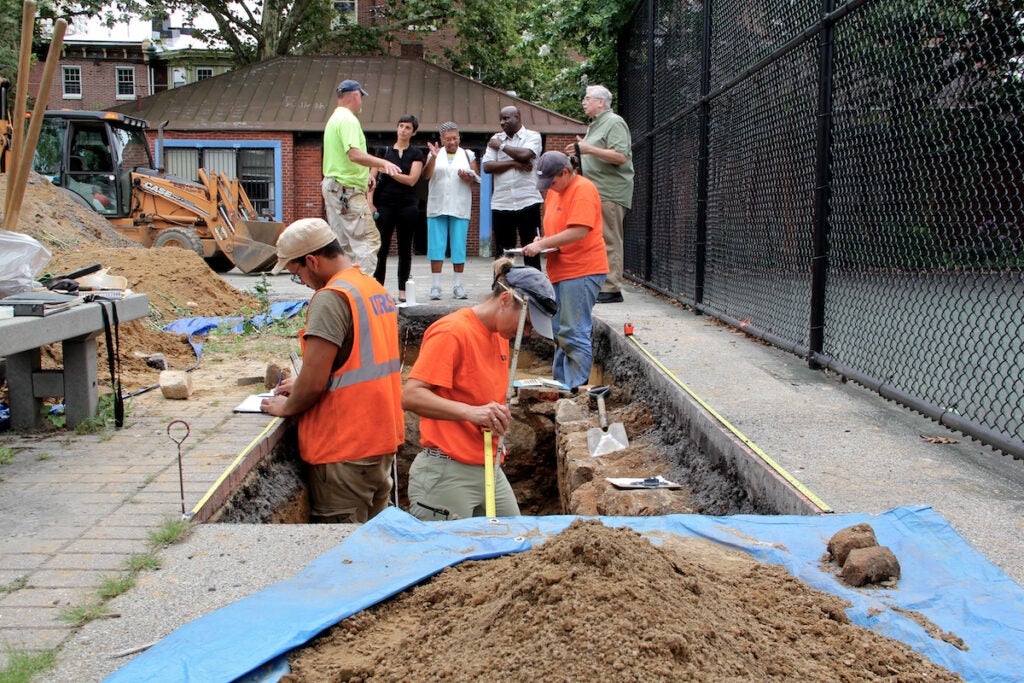
The project, “Her Luxuriant Soil,” is funded through the city’s 1% For Art program, as part of the Weccacoe playground renovation.
“Philadelphia Black History” is an expansion of “Her Luxuriant Soil”, funded largely by the National Endowment for the Arts. The Office of Arts, Culture and the Creative Economy is putting images of Black Philadelphians on the floor of City Hall where people might approach them in the same way they will approach Olivier’s playground pavers: reverent and mindful, as though they were gravestones.
The images in City Hall are only identified by the artist. The name of the subject is not immediately available. People must use a QR code in the lower right corner of each tile to connect to a web page that explains who the image depicts.
“We want people to investigate,” said Huynh. “The original folks who are buried at Bethel burying ground that inspired this exhibition, there’s an investigative process behind them as well. You have to earn that knowledge.”
Some images will be obvious to many visitors: Pearl Bailey, John Coltrane, Marion Anderson and Paul Robeson are fairly recognizable. Others may need to be looked up, like James Schuler, aka Black Gold, an Olympic boxer and middleweight champion rendered in stained glass by Wayne Stewart; Dorothy Foye, a West Philadelphia seamstress who taught her granddaughter, textile artist Asake Denise Foye-Jones, to sew; and Sadie Alexander, a pioneering Black female lawyer who was once an assistant city solicitor. Her portrait was painted by the acting chief deputy city solicitor, Melanie Levin, who paints in her free time.
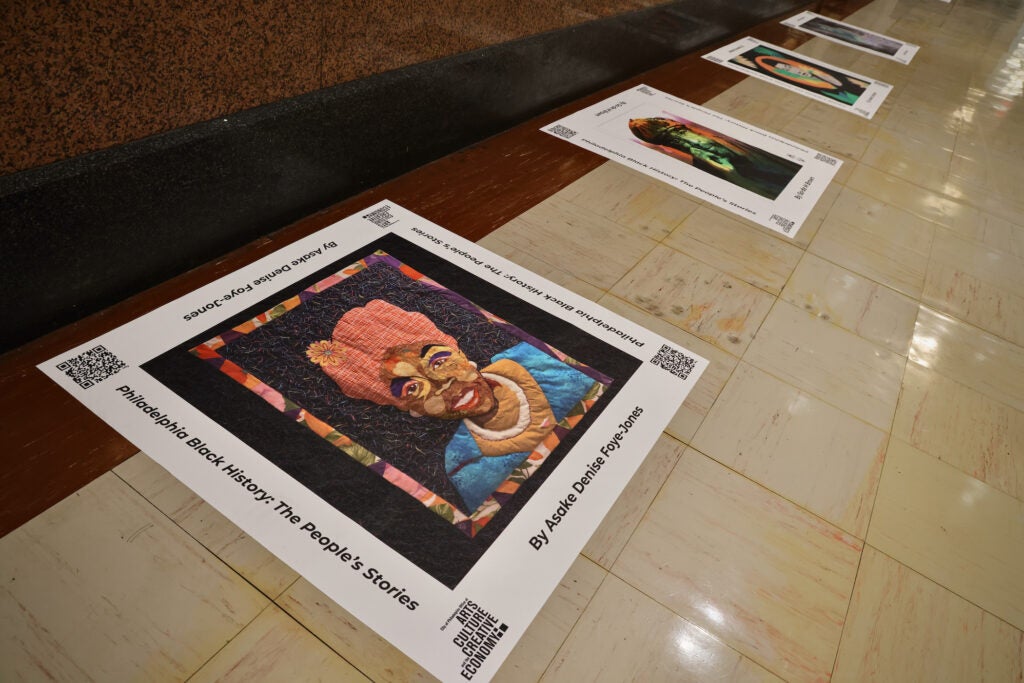
Three other public art projects anticipating the Bethel burying ground installation are planned, Huynh said, including a music-based program spotlighting the early 19th-century composer Francis Johnson. Born free in Philadelphia in 1792, he wrote popular music that allowed room for improvisation, a precursor to jazz. The details of that program are still forthcoming.

Saturdays just got more interesting.
WHYY is your source for fact-based, in-depth journalism and information. As a nonprofit organization, we rely on financial support from readers like you. Please give today.



